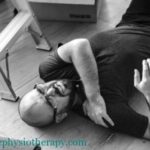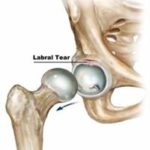Post- Fracture Physiotherapy/ Rehabilitation
Physiotherapy is an essential part of Post-Fracture Physiotherapy/ Rehabilitation. A fracture usually unites in 3 weeks in upper limb fractures and 6 weeks time in lower limb fracture with some exceptions. A fracture union is a lifelong process with modeling and re-modeling phases going throughout life.
Normally an un-displaced fracture on x-ray needs to be immobilized in a plaster cast. A displaced fracture is brought into near-normal alignment and approximated with the help of screws and plates. There are various surgical means to approximate the fractured fragments, which we are not going to deal with here.
Fractures united by surgical means can be mobilized within a few days of discharge from the hospital, while the plaster cast cases can only be mobilized after the cast is removed.
In cases of plaster immobilization patients presents with the stiffness of joint within the plaster and stiffness of joints above and below the plaster as a result of immobility. Moreover, weakness is seen in muscles that were inactive during the phase of immobilization.
Neuromuscular coordination is hampered in the functioning of the affected limb causing difficulty in activities which the patient could easily do before immobilization.
Proprioception is affected in lower limb fractures and poor rehabilitation may result in uneven weight-bearing and undue stresses on certain tissues making them prone to injury.
In an operated case, the role of a physiotherapist is to gradually improve muscle strength and joint range of motion. The patient may be on non-weight bearing, partial or full weight bearing, depending on the advice of the operating surgeon. Once the fracture is healed fully vigorous training can be started to gain back the strength, complete ROM, agility, proprioception, and endurance.
Tools for Post-Fracture Physiotherapy
Hot Packs/ Ice Packs (Depending upon the Inflammation) :
If pain and swelling around the involved joint are on the higher side, ice packs should be preferred while in the rest of the cases hot packs are used.
Wax Bath :
can be used in fractures where the plaster has been placed for a long time resulting in excessive stiffness of skin.
Mobilization Techniques to Increase the Range of Motion :
- Range of motion exercises
- Resisted exercises
- Stretches are used at times again to improve the range
- Proprioception, strength, and endurance training
- Specially designed sporting activities to improve neuromuscular coordination.
Not all cases are similar, specific considerations are needed depending upon the condition of the patient. We have successfully handled several complicated cases of fracture in the past. We also have achieved the desired results in record time in most of them.










